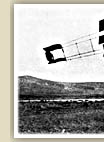|
|
 |
 |
 |
 |
 |
 |
 |
 |
 |
 |
|
During the period 1900-20 significant developments emerged in Greek photography, and issues concerning the aesthetics of photography and its emancipation as an independent form of art were raised.
|

In 1902 in the arts periodical Pinakothiki (Gallery) the first article dealing with photography as art as opposed to technique was published (Konstantinos Konsolas, I fotografiki tehni (The Art of Photography). New aesthetic concepts were thus formulated that reveal
familiarization with modern photographic tendencies,
and Greek photographers participated in international exhibitions. The
established traditional framework, however, remained dominant. In 1903 the first
technical photography book was published in Greece by V. D. Raptopoulos (Fotografia itoi
praktiki methodos pros ekmathisin tis forgrafikis technis meth'olon ton kladon tis), while in
1907 Eikonografimeni, a monthly periodical with photo-journalism, displayed colour photographs for the first time in Greece.
Wartime photo-journalism came to the fore during the Balkan Wars. From these much
photographed wars we have, in addition to the pre-composed, static photographs,
pictures of realistic action. Most of the photographers remain anonymous. They were probably soldiers and officers
who had taken along with them a photographic camera. Naturally there were also professionals. Panorama tou Polemou
1912-1913, a publication by Á. Konstandinidis, photographer and zincographer, stands out as being exceptional.
The Asia Minor Campaign up to the Catastrophe of Smyrna was covered by the Asia Minor
painter Yorgos Prokopiou in his capacity both as photographer and cinematographer. With the assistance
of the French consul the boxes containing his films and paintings were smuggled illegally abroad,
while he himself managed to escape from the Turkish prisons,
|
 |

where he was incarcerated and sentenced to death, and reached Greece
in the Christmas of 1922.
In 1916 the Association of Greek Photographers (ÓÅF) was established, and in 1920 the protection
of photographic creation was guaranteed by the then progressive law
'on intellectual property'. In 1920 there were 46 photographers
in Athens and 7 in Piraeus. In 1912-13 the first travelling photographers
emerged with their characteristic wooden (later elaborately decorated) cameras
on tripods, which developed films in a few minutes. In 1920 there were 250 such
travelling photographers. Towards the end of the 1920s the institution
of the weekly studio photograph evolved, usually artistic portraits, delivered
to the client within a week, a period required by the photographer to develop and edit
the photograph. The major photographers of the period included Spyros Kokolis, Epameinondas Xanthopoulos,
Antonis Milionis and Anastasios Gaziadis, although there were others not only in Athens but in Asia Minor, Egypt and elsewhere. The brothers Yannis and Miltiadis Manakis from Epirus
were 'the pioneers of cinema in the Balkans'. In Greece the first film company, Asty Film, which
produced newsfilms, was established in 1916 by Dimos Vratsanos.
|
 |
 |
|
